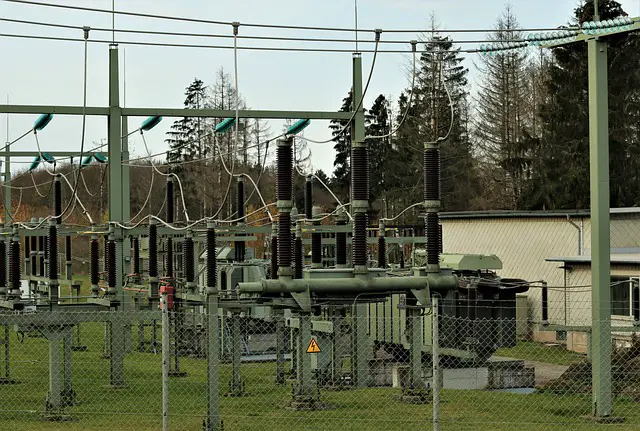Transformers play a crucial role in electrical systems, efficiently transferring electrical energy between different voltage levels.
One important aspect of transformer design is grounding, which ensures safety, system stability, and reliable operation.
In this article, we will explore the reasons why the star point of a transformer is grounded, along with the various grounding methods used.
As a short answer, The star point of a transformer is grounded to ensure safety, establish a fault current path, balance neutral current flow, and enable effective ground fault detection.
Table of Contents
Understanding Grounding in Transformers

Grounding in electrical systems refers to the connection of a circuit or equipment to the Earth or a reference point with zero potential.
It serves several purposes, including safety, fault current path establishment, and neutral current flow balancing.
When it comes to power transformers, grounding is of utmost importance for reliable and secure operation.
Read also my article: Transformer Ungrounded Neutral Impact.
Why Star Point of Transformer is Grounded
Safety Considerations
The primary reason for grounding the star point of a transformer is to ensure safety.
By connecting the star point to the ground, the risk of electric shock to humans is significantly reduced.
In case of a fault, such as a short circuit between a phase conductor and the ground, the fault current is effectively diverted through the grounding system, minimizing the potential for electrical injuries.
Fault Current Path
Grounding the star point also helps establish a fault current path. In the event of a fault, the ground connection provides a low-impedance path for the fault current to flow.
This diverts the fault current away from the transformer windings, preventing excessive damage to the insulation and reducing the possibility of catastrophic failures.
Neutral Current Flow
Another key reason for grounding the star point is to facilitate a balanced neutral current flow. In a three-phase system, the loads on each phase may not be perfectly balanced.
As a result, a neutral current flows through the star point. By grounding the star point, this current is allowed to flow safely to the ground, ensuring that the potential difference between the neutral and ground remains within acceptable limits.
Ground Fault Detection
Grounding the star point enables efficient ground fault detection. In systems with grounded star points, ground fault protection devices can be employed to monitor the current flow between the neutral and ground.
These devices promptly detect ground faults, ensuring the reliability of the electrical system and minimizing the risk of fires or equipment damage.
Grounding Methods for Star Point of Transformers
Several grounding methods are employed for the star point of transformers, depending on specific requirements and system configurations:
Solid Grounding: In solid grounding, the star point is directly connected to the ground with low impedance. This method provides a strong fault current path and facilitates ground fault detection but can result in high fault currents.
Resistor Grounding: Resistor grounding involves connecting a resistor between the star point and the ground. This method limits the fault current magnitude, providing some fault protection and reducing the potential for damage. However, it may prolong the fault duration and affect system stability.
Reactor Grounding: Reactor grounding utilizes an inductor or a reactor connected between the star point and the ground. This method provides a balance between fault current magnitude and system stability, allowing limited fault current flow while mitigating voltage imbalances during ground faults.
Ungrounded (Isolated) Systems: In certain cases, transformers are intentionally left ungrounded or isolated. These systems are typically employed in critical applications where uninterrupted operation is crucial, such as hospitals or data centers. However, isolation transformers are equipped with specialized protective devices to detect and isolate any ground faults that may occur.
Grounding Requirements and Standards
Grounding requirements and standards vary across countries and regions. International electrical standards, national electrical codes, and recommended practices provide guidelines for proper grounding practices in transformers.
It is essential to adhere to these standards to ensure the safety and reliability of electrical systems.
Grounding Challenges and Considerations
While grounding the star point of a transformer offers numerous benefits, there are also challenges and considerations to address:
High-Impedance Grounding: High-impedance grounding systems limit the fault current magnitude to a very low value, significantly reducing the risk of equipment damage. However, they require precise fault detection mechanisms and can be more complex to implement.
Grounding in Isolated Systems: Isolated systems, with ungrounded transformers, demand robust ground fault detection and isolation methods to ensure continuous operation while minimizing the risk of shock hazards.
Ground Faults in Delta-Wye Transformers: Grounding a Delta-Wye transformer configuration poses specific challenges due to the unavailability of a neutral point. Special techniques and equipment, such as ground fault neutralizers, are employed to address these challenges.
Grounding in Complex Power Systems: In large-scale power systems, with interconnected transformers and multiple grounding points, careful coordination of grounding schemes is necessary to maintain system stability, minimize ground fault effects, and ensure proper fault current distribution.
Conclusion
Grounding the star point of a transformer is essential for safety, fault current path establishment, neutral current flow balancing, and ground fault detection.
By grounding the star point, the risk of electric shock is reduced, potential damage to the transformer is minimized, and system stability is ensured.
Different grounding methods and adherence to relevant standards and practices further enhance the effectiveness of grounding in transformers.
Proper grounding practices contribute to electrical systems’ overall reliability and safety, providing peace of mind for operators and consumers alike.
Don’t Leave Empty-Handed!
Install my Free Android App on Google Play:
Electrical Cables Most Common Tables “Cables Tables”
And, my Electrical Calculations App “Fast Electrical Calculator”
Discover more great content by subscribing to My channel
Looking to stay ahead of the game in the world of electrical engineering? Subscribe to my YouTube channel and gain access to exclusive content you won’t find anywhere else!
The staff I recommend
(Amazon Affiliate Links to products I believe are high quality):
- Economy 120 Volt/60Hz AC Power Source – Step-Down Voltage & Frequency Converters 1800W
- UNI-T Digital Multimeter Tester UT139C
- 50-Amp Extension Cord for RV “100ft”
- Voltage Stabilizer 110/220v
- Hair Dryer “best selling“
- TOSHIBA EM131A5C-BS Countertop Microwave Ovens
Disclaimer: This contains affiliate links to Amazon products. I may earn a commission for purchases made through these links.

